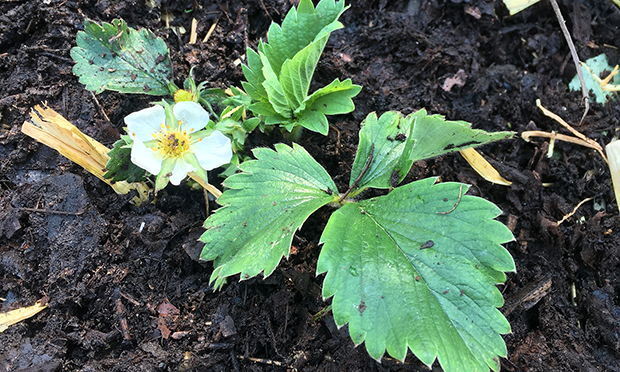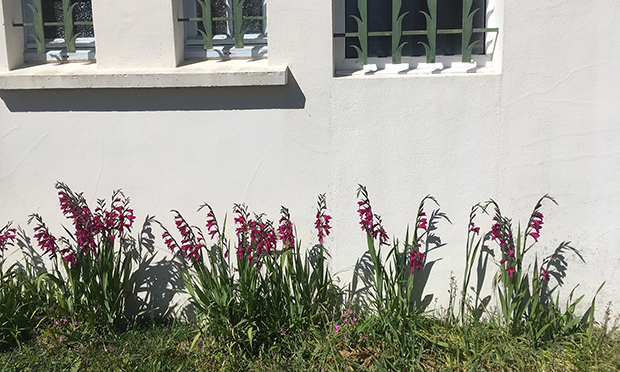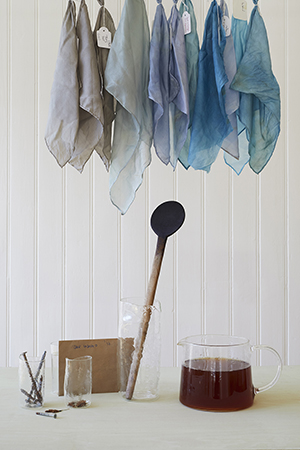The Citizen Gardener: ‘We need to get used to weeds in the streets’

Growing in the margins
Just as we start waking up to spring, the hope it brings and the explosion of new life, we also wake up to the sound of mowers and the sad sight of contractors spraying ‘weeds’ in the streets and on estates.
To its credit the council says it has cut down the use of glyphosphate by half and allows strips of grass to grow tall but if we’re to support biodiverstiy we need to do more.
An online campaign called #saynotothemow, run by a group called Little Green Space, is encouraging councils not to mow grass verges.
A more relaxed mowing regime allows wild plants like daisies and dandelions to flower and provide food and shelter for wildlife.
It may seem like a pointless exercise when the world is stumbling towards environmental collapse, but I think we can all do something to improve our local area for wildlife.
We don’t have so many verges in Hackney but we have lots of pavement tree pits and street margins which can be used to grow plants and flowers.
In the 10xGreener area around Daubeney Road, E5, where I work as the postcode gardener, residents are building planters around pavement trees.
However, a council tree specialist told us that putting soil up against tree trunks can cause problems.
So we’re working out new designs for tree pit planters based on a kind of Polo mint. This keeps soil away from the tree with planters that are tall enough not to cause a trip hazard.
You can also put planters around street furniture like parking notices to avoid the risk of damaging trees (and dealing with difficult growing conditions – shaded, compacted and dry).
Make sure that what you plant doesn’t obscure the sign itself or cause a hazard to pedestrians or drivers – or you will risk your plants getting taken away.
Around Daubeney Road, we’ve been using the street margins between pavements and properties to sow seeds and plant climbers to make use of vertical space up walls and fences.
Sadly, the climbers were removed along with other wild plants growing there, we assume by the council.

Some people want nature to be ‘tidy’ and don’t like ‘weeds’ – but more and more residents are pushing for an untidiness, or rewilding, because that benefits nature.
From this month the council has suspended all herbicide use in the 10xGreener area. It has has been planning this action for some time and it’s a very welcome development.
We need to get used to seeing wild plants (aka weeds) in the streets and accepting them as important parts of the biodiversity rather than being messy and ugly.
This tension between wildlife and tidiness is something we really need to work out.
It’s a cultural shift away from viewing the traditional garden, which controls and organises nature, as the ‘right’ way and nature itself which just needs the space to look after itself – in its untidy way.
Hackney Colour Wheel
Last summer, to mark the last growing season at Cordwainers Garden, we decided to use all the plants we could and food waste to make a spectrum of colour.

Here are some of the more than 150 colours we produced, photographed by Carmel King.
The council has given us permission to make a new dye bed in St Thomas’s Recreation Ground, so we are in the process of moving plants there and have got a design created by garden designer Chris Collins.
If anyone would like to be involved with maintaining and developing the dye garden and perhaps forming a St Thomas’s Rec Park Users Group, let me know –hello@cordwainersgrow.org.uk.
Mulching
Mulching is one of the most valuable practices in gardening.
It is a layer of any material put on the soil. It can be organic (eg straw, compost, manure, cardboard, newspaper) or inorganic/mineral (e.g. plastic sheeting, stones).
One of the most important benefits it that mulching conserves soil moisture.
It’s striking the difference a layer of mulch makes to the ability of a plant to grow without added water and in these drought-ridden times, this is very important.
In Spain, growers have used stones as a mulch in polytunnels to retain moisture and radiate heat at night.
Other benefits are soil improvement and structure.
An organic mulch will be pulled down into the soil by worms bringing nutrients and air into the earth (compacted soil is the enemy of any plant as they can’t take up water or nutrients).
It also helps keep down weeds and insulates the soil by keeping it cooler in summer and warmer in winter.
A good layer of mulch can prevent soil erosion and nutrient loss.
Basically, it’s a must and even if you’re growing in pots, a layer of grit on the top will help stop water evaporation.
Be sure you mulch after watering; otherwise you’re conserving a dry soil.
Depending on the mulch and the purpose, a layer should be at about 2cm deep.
Beware, though, some mulches can be good hiding places for slugs and snails. If you want to know more, Joy Larkcom’s Grow Your Own Vegetables has many pages on mulching.
Kate Poland is an award-winning community gardener. She was chosen to be the UK’s first ever postcode gardener in E5 as part of Friends of the Earth’s 10xGreener project. For more information, head to cordwainersgrow.org.uk and friendsoftheearth.uk
Photos and captions courtesy of Kate Poland unless stated otherwise.
